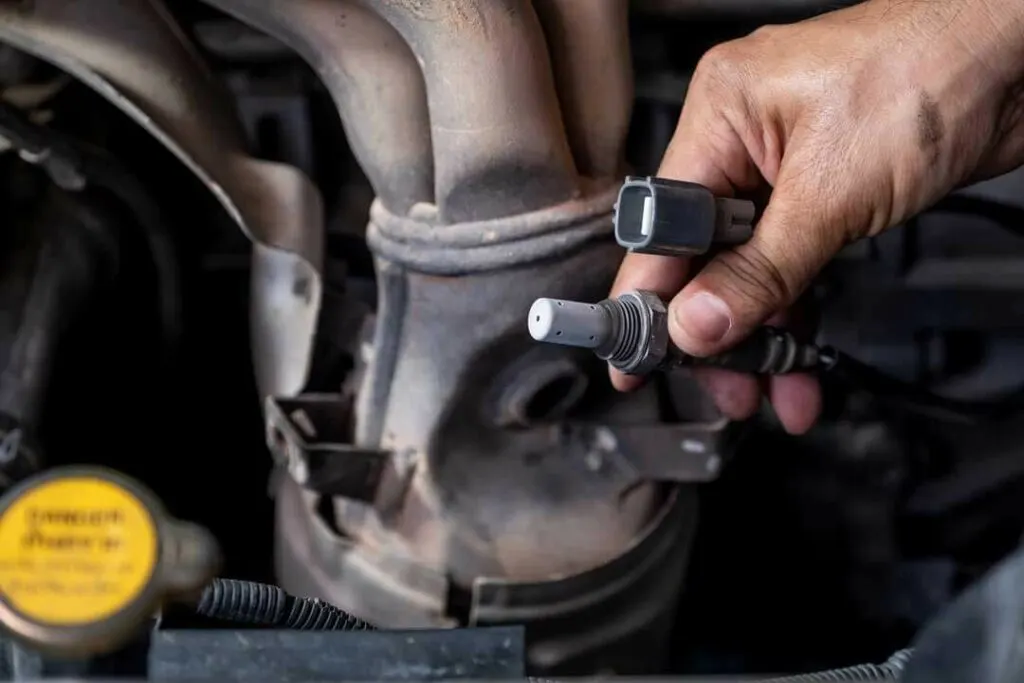Oxygen sensors are the underdog of your car’s engine. Often overlooked, these small but mighty components are vital in maximizing engine efficiency and minimizing harmful emissions.
Oxygen sensors are the engine’s respiratory system, continuously monitoring oxygen levels in exhaust gases and providing crucial feedback to the engine management system. This enables real-time adjustments for optimal fuel and air balance.
Understanding oxygen sensors goes beyond engine performance; It helps protect the environment by reducing harmful emissions. So, join us as we demystify the breath of your engine and empower you with the knowledge to optimize your vehicle’s performance.

What Are Oxygen Sensors and How Do They Work?
Oxygen sensors, or O2 sensors, are vital components in modern vehicles’ exhaust systems. These sensors are responsible for monitoring the oxygen levels in the exhaust gases emitted by the engine.
By measuring the oxygen content, they provide critical feedback to the engine control unit, enabling it to adjust the air-fuel mixture for optimal combustion. This feedback loop ensures the engine runs efficiently, maintains fuel economy, and minimizes harmful emissions.
Oxygen sensors come in various types, such as heated oxygen sensors (HO2S), wideband oxygen sensors (WBO2), and narrowband oxygen sensors (NBO2), each with its functionality and purpose.
Now that we got the basics covered let’s dig a little deeper and learn how oxygen sensors work exactly.
How Do Oxygen Sensors Work?

Oxygen sensors are like detectives in your car’s exhaust system. As mentioned, their job is to check the amount of oxygen in the exhaust gases. They do this by using a small ceramic element coated with platinum. This element allows oxygen molecules to pass through it.
The sensor compares the amount of oxygen in the exhaust gas with the amount in the air outside the car. If there is a significant difference, it means that the engine’s air-to-fuel ratio is not balanced.
Too much oxygen in the exhaust gas means the engine is running “lean” and not getting enough fuel. On the other hand, too little oxygen means the engine is running “rich” with too much fuel.
Based on this information, the sensor sends a voltage signal to the engine control unit (ECU), like the car’s brain. The ECU then adjusts the fuel injection to maintain the right air-to-fuel ratio for efficient combustion.
A car usually has one or more oxygen sensors placed before and after the catalytic converter. The one before the converter is called the upstream or pre-catalytic converter sensor, which helps the ECU monitor the air-to-fuel ratio. The one after the converter is called the downstream or post-catalytic converter sensor, which checks the catalytic converter’s performance.
Importance of Oxygen Sensors for Engine Performance

Oxygen sensors provide crucial data to the engine control unit (ECU), allowing it to make precise adjustments to the air-fuel mixture. This optimization ensures efficient combustion, directly translating into enhanced engine performance and power output.
A properly functioning oxygen sensor helps maintain the ideal air-fuel ratio, preventing the engine from running too rich or lean. Running rich can lead to:
- decreased fuel efficiency,
- increased emissions,
- and potential damage to the catalytic converter.
On the other hand, running lean can cause:
- engine overheating,
- increased combustion temperatures,
- and the potential for engine knocking or damage.
Moreover, oxygen sensors play a vital role in emissions control. They help reduce harmful pollutants, such as carbon monoxide (CO), nitrogen oxides (NOx), and hydrocarbons (HC), by enabling the ECU to maintain the optimal combustion environment. Compliance with emission standards is not only a legal requirement but also contributes to environmental sustainability and air quality.
Oxygen Sensor Maintenance and Replacement

Proper maintenance and timely replacement of oxygen sensors ensure their optimal performance and prolong their lifespan. Like any other component, oxygen sensors require upkeep and eventual replacement over time. Here are some tips to help you keep your oxygen sensors in top-notch condition:
Understand the signs of a failing oxygen sensor.
A malfunctioning oxygen sensor can lead to various issues, including decreased fuel efficiency, rough idling, engine misfires, and increased emissions. If you notice any of these symptoms, it’s essential to have your oxygen sensor checked.
Perform regular maintenance.
Oxygen sensors are exposed to harsh conditions, such as high temperatures and contaminants in the exhaust gases. While they don’t require regular maintenance like oil changes, it’s a good idea to keep them clean and ensure no loose connections. Regularly inspect the sensor wiring and connectors for any damage or corrosion.
Clean your oxygen sensors.
If you suspect your oxygen sensor is contaminated with soot, oil, or carbon deposits, you can attempt to clean it. However, not all oxygen sensors are cleanable, and cleaning methods can vary depending on the sensor type. Consult your vehicle’s manual or contact the manufacturer for specific instructions. In some cases, it may be more practical to replace the sensor rather than cleaning it.
Perform timely sensor replacement.
Oxygen sensors have a limited lifespan, typically ranging from 30,000 to 100,000 miles (48,000 to 160,000 kilometers), although this can vary depending on the sensor type and driving conditions. As they age, their performance deteriorates, leading to inaccurate readings. If your oxygen sensor fails, make sure to replace it promptly.
Choose the right sensor.
When replacing an oxygen sensor, selecting the correct one for your vehicle is essential. Oxygen sensors come in different types, such as heated or unheated, with specific thread sizes and connector types. Refer to your vehicle’s manual or consult a trusted mechanic or parts specialist to ensure you get the right sensor for your car.
Opt for professional installation.
While replacing an oxygen sensor is generally straightforward, it may require accessing hard-to-reach areas underneath the vehicle. If you’re unfamiliar with automotive repairs, it’s recommended to have a professional mechanic perform the replacement to ensure it’s done correctly.
Exploring Different Types of Oxygen Sensors

Narrowband Oxygen Sensors (NBO2)
Narrowband or zirconia sensors are the most common type found in vehicles. They consist of a ceramic element with a porous platinum coating. NBO2 sensors operate on the principle of comparing the oxygen levels in the exhaust gases to that of the ambient air.
Narrowband sensors generate a voltage signal that toggles between rich and lean conditions, providing limited feedback to the ECU for basic air-fuel ratio adjustments.
Wideband Oxygen Sensors (WBO2)
Wideband or lambda sensors offer more advanced monitoring capabilities than narrowband sensors. They use a different sensing element, typically based on a zirconium dioxide-based ceramic or a planar oxygen pump.
WBO2 sensors provide continuous and precise readings across a wide range of air-fuel ratios, enabling more accurate control and adjustment of the air-fuel mixture. They generate a voltage signal corresponding to the air-fuel ratio, allowing the ECU to make precise adjustments for optimal engine performance and emissions control.
Heated Oxygen Sensors (HO2S)
Both narrowband and wideband sensors can be equipped with heating elements to help them reach operating temperature quickly. Heated oxygen sensors enhance sensor responsiveness, particularly during cold starts when exhaust temperatures are lower. This allows for faster and more accurate readings, enabling the ECU to adjust the air-fuel mixture promptly.
Oxygen Sensors: Fueling Efficiency and Environmental Responsibility
Oxygen sensors may be small in size, but they play a mighty role in your engine’s performance and environmental impact. By understanding the importance of oxygen sensors, and properly maintaining them, you can unleash the full potential of your engine and contribute to a greener, more efficient driving experience.
So, next time you hit the road, take a moment to appreciate these often-overlooked components diligently operating in the background and maintaining your engine’s vitality. And remember to take good care of them!

Jessi is the creative mind behind The Coffee Mom, a popular blog that combines parenting advice, travel tips, and a love for all things Disney. As a trusted Disney influencer and passionate storyteller, Jessi’s authentic insights and relatable content resonate with readers worldwide.
